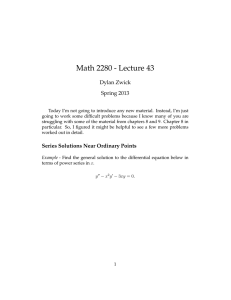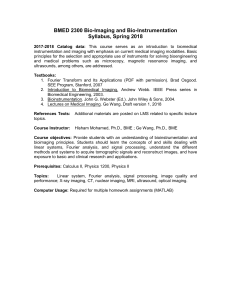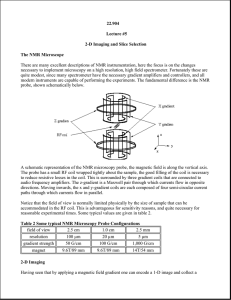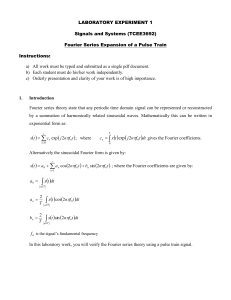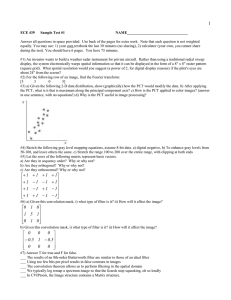Harvard-MIT Division of Health Sciences and Technology
advertisement
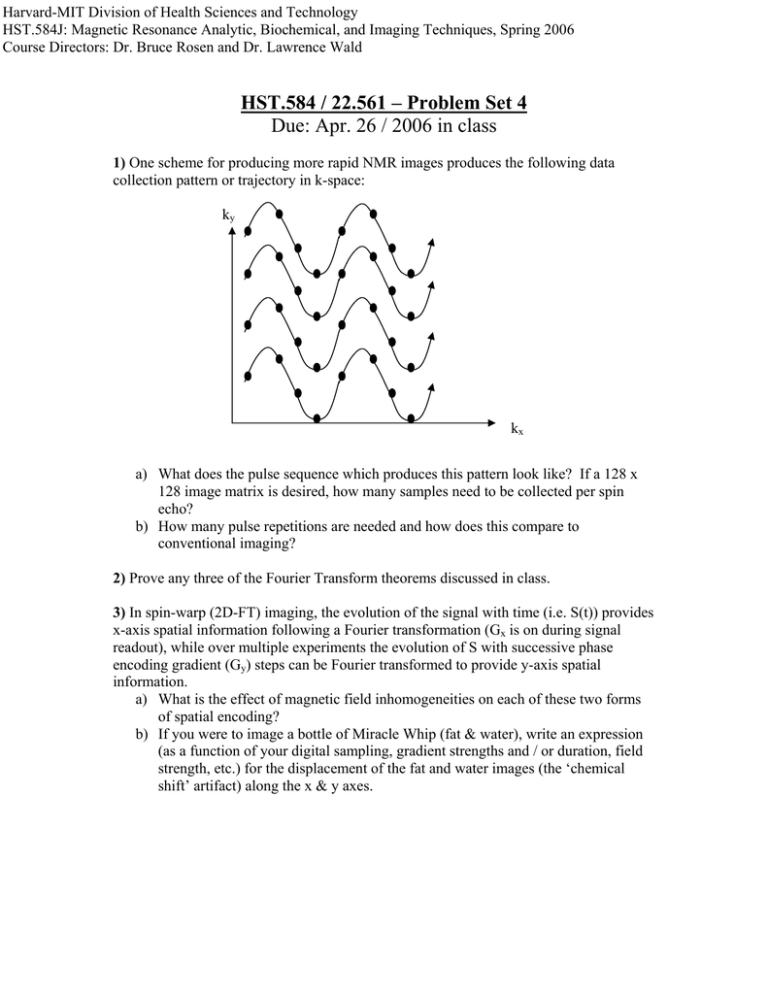
Harvard-MIT Division of Health Sciences and Technology HST.584J: Magnetic Resonance Analytic, Biochemical, and Imaging Techniques, Spring 2006 Course Directors: Dr. Bruce Rosen and Dr. Lawrence Wald HST.584 / 22.561 – Problem Set 4 Due: Apr. 26 / 2006 in class 1) One scheme for producing more rapid NMR images produces the following data collection pattern or trajectory in k-space: ky kx a) What does the pulse sequence which produces this pattern look like? If a 128 x 128 image matrix is desired, how many samples need to be collected per spin echo? b) How many pulse repetitions are needed and how does this compare to conventional imaging? 2) Prove any three of the Fourier Transform theorems discussed in class. 3) In spin-warp (2D-FT) imaging, the evolution of the signal with time (i.e. S(t)) provides x-axis spatial information following a Fourier transformation (Gx is on during signal readout), while over multiple experiments the evolution of S with successive phase encoding gradient (Gy) steps can be Fourier transformed to provide y-axis spatial information. a) What is the effect of magnetic field inhomogeneities on each of these two forms of spatial encoding? b) If you were to image a bottle of Miracle Whip (fat & water), write an expression (as a function of your digital sampling, gradient strengths and / or duration, field strength, etc.) for the displacement of the fat and water images (the ‘chemical shift’ artifact) along the x & y axes.







